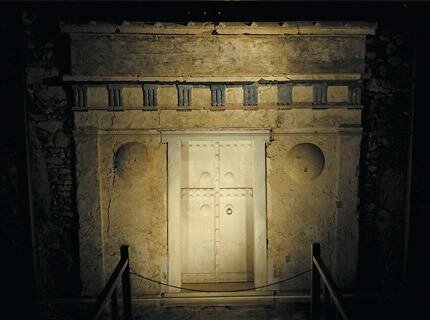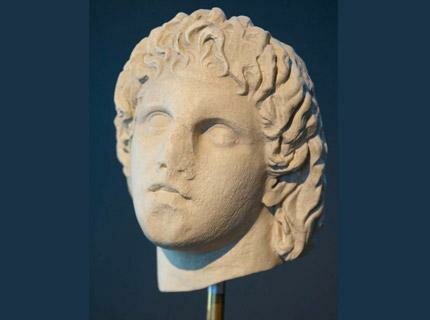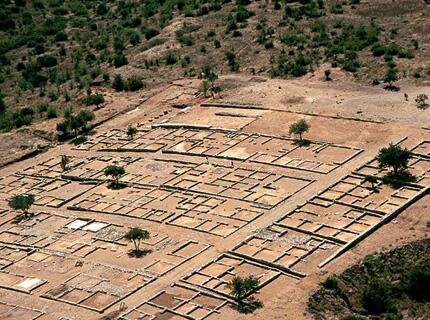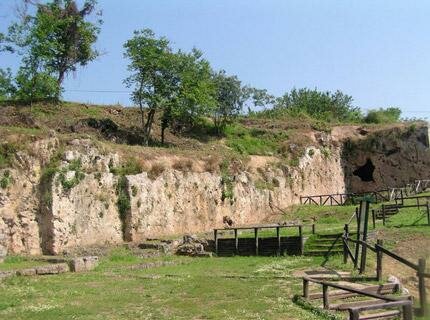The excavation by Professor Manolis Andronikos and his associates under the Great Tumulus of Vergina village in Imathia, Central Macedonia in 1977 brought to light the most important archaeological discovery of the 20th century in Greece.
Today’s Vergina (Ancient Aigai), in the foothills of Mt. Pieria, was the first capital of ancient kingdom of Macedonia, called Aigai. The site of the Royal Tombs under a modern roof hosts the main excavation, as well as an exhibition of the major finds from the burials. It is protected by UNESCO as world cultural heritage and comprises a unique discovery of an enormous universal impact.
In the same area, inhabited continuously since the 3rd millennium BC, are also the ruins of an acropolis, palace, theater, shrines and private buildings, and hundreds of common graves of an extensive necropolis of the ancient city of Aigai until Roman times.
The exhibition’s shelter has the external form of the Great Tumulus, a man-made mound, while the underground building has been housing since November 1997 tombs and treasures found in them. This sheltered group includes three Macedonian tombs: the intact tomb of Philip II (II) with a hunting scene fresco painting. Intact is also the so-called Tomb of the Prince (III), which may belong to Alexander IV, grandson of Philip II and his son Alexander the Great and another ruined and plundered Macedonian tomb (IV) of the third BC century.
The visitor will also see a plundered a cist family tomb (I), known as the “Tomb of Persephone”, with the incomparable fresco of the abduction of Persephone by Hades and a ruined building named "Heroon", probably used for the worship of the dead royal members buried next door. Some of the major finds exhibited here are the two golden urns, containing the bones of Philip II and one of his wives, two oak and one myrtle golden wreaths worn by the royal dead. On display is also the rare gold-and-purple embroidered cloth, which wrapped the bones of the royal wife, along with her golden diadem of a unique art, two ivory symposium beds, weapons and armor of Philip II, valuable symposium utensils of the royal family and the silver urn of "Prince."



